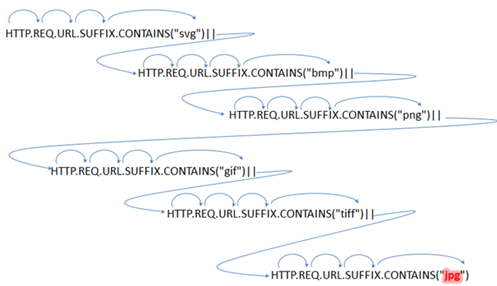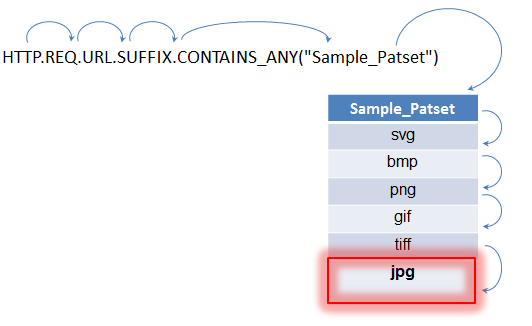-
AppExpert Applications and Templates
-
Configure application authentication, authorization, and auditing
-
-
How String Matching works with Pattern Sets and Data Sets
-
-
-
Advanced Policy Expressions: Working with Dates, Times, and Numbers
-
Advanced Policy Expressions: Parsing HTTP, TCP, and UDP Data
-
Advanced Policy Expressions: IP and MAC Addresses, Throughput, VLAN IDs
-
-
This content has been machine translated dynamically.
Dieser Inhalt ist eine maschinelle Übersetzung, die dynamisch erstellt wurde. (Haftungsausschluss)
Cet article a été traduit automatiquement de manière dynamique. (Clause de non responsabilité)
Este artículo lo ha traducido una máquina de forma dinámica. (Aviso legal)
此内容已经过机器动态翻译。 放弃
このコンテンツは動的に機械翻訳されています。免責事項
이 콘텐츠는 동적으로 기계 번역되었습니다. 책임 부인
Este texto foi traduzido automaticamente. (Aviso legal)
Questo contenuto è stato tradotto dinamicamente con traduzione automatica.(Esclusione di responsabilità))
This article has been machine translated.
Dieser Artikel wurde maschinell übersetzt. (Haftungsausschluss)
Ce article a été traduit automatiquement. (Clause de non responsabilité)
Este artículo ha sido traducido automáticamente. (Aviso legal)
この記事は機械翻訳されています.免責事項
이 기사는 기계 번역되었습니다.책임 부인
Este artigo foi traduzido automaticamente.(Aviso legal)
这篇文章已经过机器翻译.放弃
Questo articolo è stato tradotto automaticamente.(Esclusione di responsabilità))
Translation failed!
How string matching works with pattern sets and data sets
A pattern set or data set contains a set of patterns, and each pattern is assigned a unique index. When a policy is applied to a packet, an expression identifies a string to be evaluated, and the operator compares the string to the patterns defined in the pattern set or data set until a match is found or all patterns have been compared. Then, depending on its function, the operator returns either a boolean value that indicates whether or not a matching pattern was found or the index of the pattern that matches the string.
Note: This topic explains the working of a pattern set. Data sets work the same way. The only difference between pattern sets and data sets is the type of patterns defined in the set.
Consider the following use case to understand how patterns can be used for string matching.
You want to determine whether the URL suffix (target text) contains any of the image file extensions. Without using pattern sets, you would have to define a complex expression, as follows:
HTTP.REQ.URL.SUFFIX.CONTAINS("svg") ¦¦ HTTP.REQ.URL.SUFFIX.CONTAINS("bmp") ¦¦ HTTP.REQ.URL.SUFFIX.CONTAINS("png") ¦¦
HTTP.REQ.URL.SUFFIX.CONTAINS("gif") ¦¦ HTTP.REQ.URL.SUFFIX.CONTAINS("tiff") ¦¦ HTTP.REQ.URL.SUFFIX.CONTAINS("jpg")
<!--NeedCopy-->
If the URL has a suffix of “jpg,” with the above compound expression, the Citrix ADC appliance has to iterate through the entire compound expression sequentially, from one sub expression to the next, to determine that the request refers to a jpg image. The following figure shows the steps in the process.

When a compound expression includes hundreds of sub expressions, the above process is resource intensive. A better alternative is an expression that invokes a pattern set, as shown in the following figure.

During policy evaluation as shown above, the operator (CONTAINS_ANY) compares the string identified in the request with the patterns defined in the pattern set until a match is found. With the Sample_Patset expression, the multiple iterations through six sub expressions are reduced to just one.
By eliminating the need to configure compound expressions that perform string matching with multiple OR operations, pattern sets or data sets simplify configuration and accelerate processing of requests and responses.
Share
Share
In this article
This Preview product documentation is Cloud Software Group Confidential.
You agree to hold this documentation confidential pursuant to the terms of your Cloud Software Group Beta/Tech Preview Agreement.
The development, release and timing of any features or functionality described in the Preview documentation remains at our sole discretion and are subject to change without notice or consultation.
The documentation is for informational purposes only and is not a commitment, promise or legal obligation to deliver any material, code or functionality and should not be relied upon in making Cloud Software Group product purchase decisions.
If you do not agree, select I DO NOT AGREE to exit.